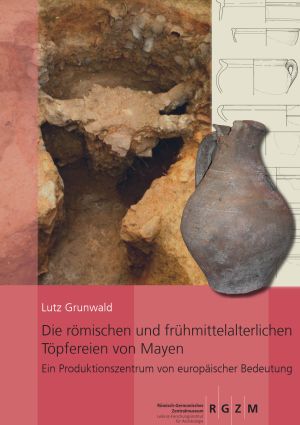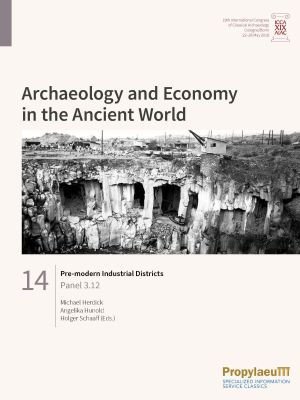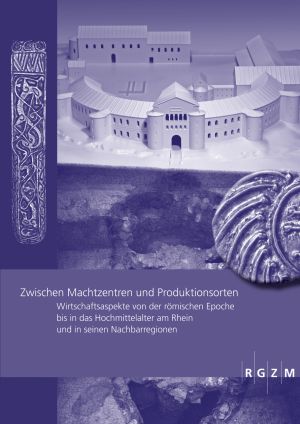Döhner, Gregor
Die römischen und frühmittelalterlichen Töpfereien von Mayen: Ein Produktionszentrum von europäischer Bedeutung
The Mayen ware produced in Mayen is considered characteristic and relevant to dating. These ceramic products were formative for parts of the ancient European economic structure. The Mayen potteries were part of the pre-modern industrial area between the Eastern Eifel and the Rhine. Here, a seamless transfer of knowledge and technology from the Roman era to the early Middle Ages took place throughout the 5th century. The study goes beyond the typochronological assessment of the vessel pottery. It also addresses aspects of the individual lives of the potters in their multi-layered lifeworlds, such as their beliefs, their dependencies on property or the monetary economy.
Pre-modern Industrial Districts: Panel 3.12
The ancient quarrying and mining district of the Eastern Eifel has been the subject of research by the Römisch-Germanisches Zentralmuseum (RGZM) in Mainz and Mayen since 1997. The products – primarily basalt lava millstones, tuffstone building material, and pottery – were extensively traded throughout much of Europe for many centuries.
An extensive research programme was launched to examine the wealth of evidence about the ancient stone industry in the region and its significance for the political establishment of Rome north of the Alps. The main subjects were the basalt and tuff stone industries as well as the Mayen vicus, the most important economic centre. Another subject is the pottery production, which is researched by material studies as well as by experimental archaeology. Other studies deal with the preconditions for the economic success, focussing on the infrastructure and the rural settlement conditions.
Being an industrial district of supraregional importance, the quarrying and mining district of the Eastern Eifel turned out an excellent case study for the investigation of pre-modern industrial districts in general, providing a model for the study of ancient industries: these need to be investigated with a long-term view and with a holistic approach, taking into account economic, social and settlement aspects.
Zwischen Machtzentren und Produktionsorten: Wirtschaftsaspekte von der römischen Epoche bis in das Hochmittelalter am Rhein und in seinen Nachbarregionen
On 12 November 2018, a cooperation agreement was signed in Ingelheim am Rhein between the Kaiserpfalz Research Centre based there and the Roman-Germanic Central Museum, Leibniz Research Institute for Archaeology. With this agreement, the close ties that have existed since the middle of the 19th century between the scientists in Mainz and the researchers of the Imperial Palace in Ingelheim were confirmed in writing. The future cooperation will focus particularly on European economic aspects and topics of supra-regional materials research. The first fruits of this cooperation were presented at interdisciplinary conferences on 12 and 13 November 2018 in Ingelheim and on 28 and 29 November 2019 in Mayen. These events also served as an intensive exchange with scientists from Germany and abroad. The results of both conferences are brought together in this conference volume. In 25 papers, the fundamentals of trade in the Rhineland and its neighbouring regions as well as the processes of the exchange of goods between centres of power, rural regions and production sites in the period from the Roman era to the High Middle Ages are examined from very different perspectives. Both for the large-scale development tendencies and the relationships between different economic regions as well as for the production sites and the marketing routes, the contributions offer trend-setting explanations, fundamental presentations and exceptional descriptions. They form the basis for future research in parts of Europe adjacent to the Rhineland, which is planned within the framework of the cooperation and will be reflected in further conferences.









